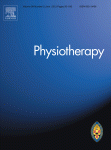
Spine
Continuous passive motion device offers effective relief of chronic low back pain
Physiotherapy. 2015 Mar;101(1):75-81.25 participants were included in this study investigating the efficacy of a continuous passive motion (CPM) device for the relief of mild to moderate, non-specific, chronic low back pain (LBP). Patients were divided into two groups to receive either immediate 3-week treatment, or a 3-week waiting period followed by treatment. A numerical rating scale (NRS) and Oswestry Disability Index (ODI) were used to assess patients after 3 weeks of treatment and at 3-week follow-up. The results indicated that compared to the control group, patients receiving CPM treatment had a lower level of pain after 3 weeks of daily treatment, and this improvement was sustained even at 3 weeks post-treatment. 83% of patients receiving treatment observed a clinical minimally important change. These results from this study should be interpreted with caution as it contained few patients.
Unlock the full article
Get unlimited access to OrthoEvidence with a free trial
Start TrialCritical appraisals of the latest, high-impact randomized controlled trials and systematic reviews in orthopaedics
Access to OrthoEvidence podcast content, including collaborations with the Journal of Bone and Joint Surgery, interviews with internationally recognized surgeons, and roundtable discussions on orthopaedic news and topics
Subscription to The Pulse, a twice-weekly evidence-based newsletter designed to help you make better clinical decisions
Exclusive access to original content articles, including in-house systematic reviews, and articles on health research methods and hot orthopaedic topics
Or continue reading this full article
Register Now

Subscribe to "The Pulse"
Evidence-Based Orthopaedics direct to your inbox.




































